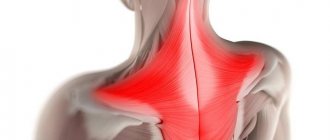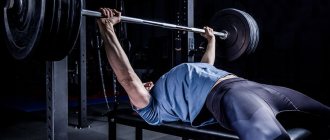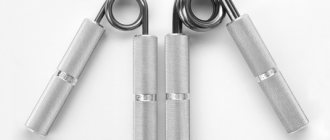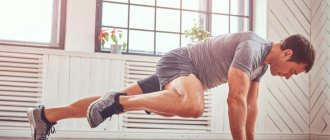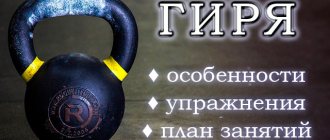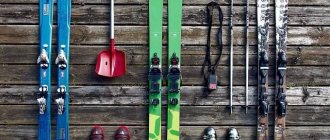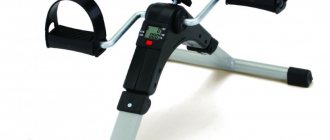A fitball or gymnastic ball is a permanent sports equipment in every gym where fitness classes are held. It is also called a Swiss or fitness ball. This large inflatable ball takes up space in the gym for a reason, but is an excellent exercise machine for developing strength, maintaining balance, and cardiovascular endurance.
Elastic and large fitballs are great for performing a wide variety of exercises, restoring shape after injury due to the ability to reduce tension in the muscles and spine. It all depends on how exactly to use such sports equipment. Fitness balls are especially popular among those who want to lose weight and stay in great shape. You can practice with a Swiss ball both in the gym and at home.
What is fitball?
Fitball (gymnastic ball) is an elastic exercise ball. It is widely used in rehabilitation and childbirth preparation programs. Alternative names for this equipment are a fitness ball or a Swiss ball. If we talk about appearance and characteristics, this is a large inflatable ball, the diameter of which ranges from 55 to 85 cm. For production, as a rule, durable materials are used that stretch well under the weight of the user and take the most convenient shape for him. This is an excellent simulator for developing a sense of balance and balance, improving coordination, developing strength, and also increasing the endurance of internal organ systems, primarily the cardiovascular system.
As mentioned earlier, exercise balls, large and bouncy, are an excellent tool for increasing the effectiveness of many exercises, and they also promote recovery from injuries, surgeries and other conditions by reducing tension in the spine and muscles. Fitball exercises for weight loss and other purposes can be performed both in the gym and at home.
Harm and contraindications
Although the benefits of exercises with a gymnastic ball are undeniable, there are certain periods and human conditions when training with a fitball is not recommended. You should not take risks in the first trimester of pregnancy, especially if the uterus is hypertonic and there is a threat of miscarriage. You cannot perform exercises with a ball if you have severe spinal injuries, including intervertebral hernia. People suffering from cardiovascular diseases or serious pathologies of internal organs should consult a doctor about exercising with a fitball.
Fitball exercises
Let's look at the TOP 15 best activities, what benefits they provide, what muscle group they affect, how to perform them correctly.
No. 1. Squats with raised arms
If you supplement traditional squats by lifting a fitness ball above your head, you can increase the level of load for developing the muscles of the neck, back, and shoulder girdle. The technique is simple. First, we take the equipment and, with outstretched arms, lift it to shoulder level. We place our feet shoulder-width apart and straighten our back. Now we do squats and at the same time raise our arms above our heads. We come out of the squat and return to the original position. During the execution, we make sure that the back remains straight and the squats are performed as low as possible.
No. 2. Wall Squats
In this case, the emphasis is on working the buttocks and quadriceps. First, we press the fitball against the wall so that it is at the level of the lumbar region. Now we turn away from the wall and press our backs against the gymnastic ball, with our legs spread as wide as possible. Now we carefully squat, bending our knees at a right angle, and at the same time we move the pelvic area back as much as possible. We freeze at the lowest point for a few seconds, and then rise to the original position.
No. 3. Pelvic lift
This is a classic exercise with a fitness ball that strengthens and sharpens the muscles of the lumbar region, as well as the buttocks. First, we lie on the floor with our backs, and then place our feet on the surface of the ball. Now carefully raise the pelvic area so that the body is straightened and forms a single line. We hold in the upper position and lower the pelvis to the floor.
No. 4. Bulgarian lunges
At first glance, these may seem like traditional lunges. However, the technique for performing them is somewhat more complicated. First, we stand up straight and place the fitball behind us. Now we take one leg back and place it on the ball, which will serve as a support. We do a squat on the second leg, trying to go as low as possible. We return to the original position. We do the exercise 10-15 times, and then change legs.
No. 5. Hyperextension
This is a mandatory exercise on a fitness ball that absolutely all beginners should do. It perfectly strengthens the lumbar region and also develops overall flexibility. To begin, we lie down on a gymnastic ball, maintaining emphasis in the upper thigh. Now you need to put your hands behind your head, while making sure that your back is as straight as possible. To fix the body, you need to rest against any ledge or floor. Next, we try to lower the body as low as possible, bending the hip joint. We return to the original position.
No. 6. Reverse hyperextension
The technique here is similar, but we perform it in the opposite direction, as a result of which the loads are directed to the femoral biceps and buttocks, without involving the lumbar region. So, we lie down on the fitness ball on our stomach. We place our arms as a support and bring our legs together. Now we try to raise our legs as high as possible. Lower your legs and repeat the exercise.
No. 7. Push ups
Of course, you can do traditional push-ups, but using specialized equipment is much more effective. We focus on the floor on straightened arms, then place our feet on a fitball, forming a single line of the torso and legs. We bend the elbow joint and lower ourselves, do a push-up and return to the starting point.
No. 8. Plank
The plank belongs to the category of static exercises on a gymnastic ball. The combination of static and dynamic exercises provides a comprehensive approach to training and ensures better results. So, we rest our toes on the floor, bend our arms at the elbow joint, placing emphasis in the forearms on the fitball. We make sure that the back is as straight as possible. We stay in this position for a minute and relax. If you're just starting out, start with 30-40 second intervals and gradually increase it.
No. 9. Reverse twists
The exercise imitates a roller; during its implementation, the load is applied not only to the core area, but also to the abs, as well as the back muscles. The technique is as follows: first we kneel and place a fitness ball in front of us. Now, as if we are hanging over him, focusing on our forearms, in order to achieve greater stability, we bring our hands together. We roll the equipment forward with our body, actively tensing the abdominal and core muscles. We take a short break and roll back.
No. 10. Reverse push-ups
During this exercise on the ball, the main load is on the triceps, and the stabilizers are also actively involved. If you are looking for powerful triceps, this is the perfect option for you. So, we put the equipment on the floor and turn to face it. We place emphasis on the fitball, position our legs so that the pelvic area is in the air, and the legs are bent at a right angle. Make sure your back is straight. Now we bend our arms at the elbow joint and slowly lower the body, then take the original position.
No. 11. Spire
Has a positive effect on all muscle groups. So, we lean on the floor with our hands, as if we are going to do push-ups, and place our feet on a fitball. Now we lift the pelvic area up, while pulling the fitness ball towards our hands. When reaching the peak, the head should be almost perpendicular to the floor line. We hold for a few seconds and return to the original position.
No. 12. Book
This is a variation of the traditional "book". First, we lie down on the floor, place the equipment at the level of the feet and clamp it, stretching our arms up. We raise our arms up and lift the gymnastic ball with our feet. We grab the projectile with our hands, lower our legs, then lower our arms with the ball. We repeat the exercise, performing a reverse pass.
No. 13. Knees to chest
The main emphasis here is on the lower abdominal and abdominal muscles. We place our hands on the floor, making sure that they are straight. We place our socks on the center of the fitball, forming a single straight line with the body. Using your legs, we pull the ball towards your body, as close to your hands as possible.
No. 14. Reverse roll
The roll is considered universal, as it simultaneously develops the hips, core muscles and buttocks. First, we take a lying position, place our heels on the ball, lifting our lower back off the floor line. Slowly bend the knee joint, moving the fitness ball towards your hands. We take the original position.
No. 15. Side lunges
They work the adductor muscle group, buttocks and thighs. First, place the ball on the side of you and move one leg away, then place the foot of the abducted leg on the ball. We carefully sit on our leg, which acts as a support. We try to perform the squat as deeply as possible. Let's go back. We perform the exercise 10-15 times, and then change legs.
Press "Berezka"
Despite the fact that the name of the exercise contains only the word “press”, this type of movement loads much more muscles, and when using a fitball, which we fix between the legs, the adductor muscles of the thigh will also be perfectly loaded. Let's begin!
- Lie down on the floor.
- Place the exercise ball between your legs so that your feet are on the center line of the ball.
- Raise your legs together with the fitball vertically up.
- Place your hands along your body with your palms facing the floor - they will serve as additional support.
- As you exhale, try to lift the ball as high as possible towards the ceiling, lifting your pelvis and lumbar region off the floor.
- As you inhale, return to the starting position.
Perform 4 sets of 15 reps.
Try to involve your abdominal muscles as much as possible, minimizing the rocking effect. Use your hands for more rigid support.
The birch tree press can also be performed in a slightly different variation, which is suitable for slightly more advanced fitness enthusiasts. The modernization involves rotating the pelvis during the positive phase of the movement. Every time you lift the fitball up, rotate it around its axis in one direction or another. In this case, the oblique abdominal muscles will additionally come into play.
How to exercise correctly on a fitness ball
Fitball exercises for weight loss have a number of important features that are important to consider:
1. Focus as much as possible on muscle mass, feel every muscle in your body. You shouldn’t chase speed and do everything quickly; it’s better to focus on quality.
2. Don't focus on one problem area. The complex should contain loads on the entire body and work out all muscle groups. If you are trying to lose weight, then working only on your abs or buttocks will not give the desired result.
3. The more you inflate the gym ball, the more effort you will need to exert during the workout. If you are just starting to train with this equipment, it is better to avoid high elasticity.
4. If you want to develop your own training system, use the circuit principle. Choose 5-10 exercises from the ones above and alternate them, performing several rounds.
5. If you are a beginner, during your first workout you should not try to catch up on all the missed sessions and take on all the exercises at once. Master a few, practice them to high accuracy, then move on to the next group. If you experience difficulty at the very beginning when performing, modify the workout by switching to a simpler option.
Training plan
If you want to achieve the maximum result from the training process, it is better to create an individual program taking into account your personal characteristics, goals and objectives. You can use and combine the above exercises. Take turns shifting your focus from one area to another.
In general, a ball session should consist of three main blocks:
1. Warm up. For warming up, it is better to use a traditional complex, which is universal regardless of the equipment used. Rotational movements and swings are used as a base; the duration of execution is 4-5 minutes. It is necessary to move from one area to another smoothly, carefully working and preparing each muscle group.
2. Exercises with a fitball. This is the main block. You can perform it using a ready-made program, which is presented in the table. Everyone determines the frequency of exercise for themselves - it would be optimal to exercise 2-3 times a week so that the muscles have time to rest.
| № | Exercise | Repeats per set | Approaches |
| 1 | Squats with raised arms | 20 | 3 |
| 2 | Wall Squats | 20 | 3 |
| 3 | Pelvic lift | 20 | 3 |
| 4 | Bulgarian lunges | 20 per leg | 3 per leg |
| 5 | Hyperextension (regular or reverse) | 20 | 1 |
| 6 | Push-ups (regular or reverse) | 10 | 3 |
| 7 | Plank | 30 sec – 1 min | 3 |
| 8 | Reverse twists | 15 | 3 |
| 9 | Spire | 20 | 1 |
| 10 | Book | 20 | 1 |
| 11 | Knees to chest | 20 | 1 |
| 12 | Reverse roll | 10 | 1 |
| 13 | Side lunges | 10 | 1 |
Stretching. Experts recommend not to ignore stretching, as it allows you to relieve stress from muscle mass and relieve stress on the spine.
By the way
Smooth or with horns?
Not all fitballs have a smooth surface. There are balls with small spikes that will complement the exercises with a massage effect. These balls are called touch or massage balls. Not bad against cellulite, but the spikes are quite hard and may not be suitable for sensitive people. Another type of ball has two handles in the form of horns or brackets. It has no practical benefit for losing weight, but it doesn’t interfere either. But children really like to jump on this ball, holding the handles.
Read also
- Exercises with an elastic band for the back are the most effective exercises for a healthy spine and lower back.
- What are the advantages of exercising with a skipping rope? Strengthens bones, develops coordination, burns a lot of calories
- A set of exercises on the horizontal bar - a selection of effective exercises on the horizontal bars
- A set of exercises with an elastic band - the best exercises with an expander for men and women

